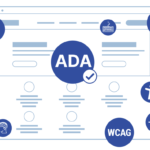The pharmaceutical landscape is continuously evolving, with generics playing an increasingly pivotal role in making medications more accessible and affordable. Among the various segments within generics, the specialty generics market has garnered significant attention due to its focus on complex and high-value medications. This comprehensive analysis delves into the current state of the global specialty generics market, its projected growth, and the major players shaping its future.
1. Understanding Specialty Generics
Before delving into market statistics and key players, it’s essential to comprehend what constitutes specialty generics. Unlike traditional generics, which typically replicate basic medications, specialty generics are more complex. They often involve:
- Complex formulations: Medications that require specialized manufacturing processes.
- Chronic conditions: Treatments for long-term diseases such as cancer, autoimmune disorders, and cardiovascular diseases.
- Advanced delivery mechanisms: Innovations like injectables, inhalers, or biologics.
The intricate nature of specialty generics necessitates higher expertise in research, development, and manufacturing, making this segment both challenging and lucrative.
2. Market Size and Growth Projections
a. Current Market Valuation (2023)
As of 2023, the global specialty generics market has achieved a substantial valuation of approximately USD 64.06 billion. This figure underscores the sector’s critical role in the broader pharmaceutical industry, catering to the demand for specialized and cost-effective treatments.
b. Projected Growth (2024-2032)
The market is poised for significant expansion over the next decade. Forecasts indicate a Compound Annual Growth Rate (CAGR) of 12% from 2024 to 2032. By the end of this period, the global specialty generics market is expected to reach an impressive USD 177.65 billion.
c. Factors Driving Growth
Several factors contribute to this robust growth trajectory:
- Rising Healthcare Expenditure: Increasing investments in healthcare infrastructure and services globally.
- Aging Population: Growing prevalence of chronic diseases among older demographics necessitates specialized treatments.
- Advancements in Biotechnology: Innovations that facilitate the development of complex generics.
- Regulatory Support: Streamlined approval processes for generics in various regions.
- Cost-Effectiveness: Demand for affordable yet effective treatments drives the shift from branded to generic medications.
3. Key Players in the Specialty Generics Market
Several pharmaceutical giants are at the forefront of the specialty generics market, each bringing unique strengths and strategies to the table. The most prominent among them include Teva Pharmaceutical Industries Ltd., Mylan N.V., Mallinckrodt plc, and Pfizer, Inc. Let’s explore their roles and contributions in detail.
a. Teva Pharmaceutical Industries Ltd.
Overview: Teva Pharmaceutical Industries Ltd., headquartered in Israel, is one of the world’s largest generic drug manufacturers. With a diverse portfolio, Teva plays a crucial role in the specialty generics segment.
Contributions to Specialty Generics:
- Comprehensive Portfolio: Teva offers a wide range of specialty generics, including treatments for multiple sclerosis, oncology, and respiratory diseases.
- Advanced Manufacturing Capabilities: Investments in state-of-the-art facilities enable the production of complex medications with high efficacy and safety standards.
- Research and Development (R&D): Teva’s strong emphasis on R&D fosters innovation, allowing the company to develop specialized formulations that meet specific patient needs.
- Global Presence: Operating in over 60 countries, Teva ensures broad distribution and accessibility of its specialty generics worldwide.
Strategic Initiatives:
- Acquisitions and Partnerships: Teva has strategically acquired companies and entered partnerships to bolster its specialty generics portfolio.
- Focus on Biosimilars: Recognizing the growing importance of biologics, Teva is expanding its biosimilar offerings, which are a subset of specialty generics.
Challenges:
- Regulatory Hurdles: Navigating the complex regulatory landscape for specialty generics requires significant resources and expertise.
- Market Competition: Intense competition from other generic manufacturers necessitates continuous innovation and efficiency improvements.
Get a Free Sample Report with Table of Contents
b. Mylan N.V.
Overview: Mylan N.V., now part of the merged entity Viatris, has been a significant player in the global generics market. Renowned for its extensive range of generic medications, Mylan has made substantial inroads into the specialty generics domain.
Contributions to Specialty Generics:
- Diverse Therapeutic Areas: Mylan specializes in areas such as cardiovascular, central nervous system, oncology, and infectious diseases, providing a broad spectrum of specialty generics.
- Global Supply Chain: An efficient and expansive supply chain ensures timely delivery and availability of specialty generics across various markets.
- Quality Assurance: Mylan maintains rigorous quality control standards, ensuring that its specialty generics meet stringent regulatory and safety requirements.
Strategic Initiatives:
- Merger with Upjohn: The merger with Pfizer’s Upjohn unit to form Viatris has enhanced Mylan’s capabilities in the specialty generics sector.
- Innovation in Delivery Systems: Mylan invests in developing advanced delivery mechanisms for its specialty generics, improving patient adherence and treatment outcomes.
Challenges:
- Patent Litigation: Engaging in patent disputes with branded pharmaceutical companies can impact market dynamics and profitability.
- Price Pressures: Increasing scrutiny on drug pricing necessitates cost-effective manufacturing and operational efficiencies.
c. Mallinckrodt plc
Overview: Mallinckrodt plc, a leading global specialty pharmaceutical company, focuses on developing and manufacturing complex generics and branded medications. The company’s expertise lies in niche therapeutic areas requiring specialized formulations.
Contributions to Specialty Generics:
- Focus on Specialty Areas: Mallinckrodt specializes in treatments for autoimmune diseases, pain management, and respiratory conditions, offering high-value specialty generics in these segments.
- Advanced Research Capabilities: The company’s robust R&D infrastructure facilitates the development of innovative specialty generics that address unmet medical needs.
- Regulatory Expertise: Mallinckrodt’s deep understanding of regulatory requirements ensures efficient approval processes for its specialty generics.
Strategic Initiatives:
- Expansion in Emerging Markets: Mallinckrodt is expanding its footprint in emerging economies, tapping into new markets with growing demand for specialty generics.
- Collaborations and Licensing Agreements: Strategic partnerships enable Mallinckrodt to access new technologies and expand its product offerings in the specialty generics space.
Challenges:
- Supply Chain Disruptions: Global supply chain issues can impact the timely production and distribution of specialty generics.
- Intellectual Property Risks: Protecting proprietary formulations and processes is crucial to maintaining a competitive edge.
d. Pfizer, Inc.
Overview: Pfizer, Inc., a global pharmaceutical behemoth, is renowned for its innovative branded drugs and vaccines. However, its involvement in the specialty generics market, particularly through its Upjohn division, positions it as a formidable player in this segment.
Contributions to Specialty Generics:
- Extensive R&D Infrastructure: Pfizer’s significant investment in research and development facilitates the creation of high-quality specialty generics.
- Strong Brand Recognition: Leveraging its reputable brand, Pfizer ensures trust and reliability in its specialty generic offerings.
- Comprehensive Therapeutic Coverage: Pfizer’s specialty generics span multiple therapeutic areas, including oncology, cardiovascular, and immunology.
Strategic Initiatives:
- Formation of Viatris: The merger of Pfizer’s Upjohn unit with Mylan to form Viatris enhances Pfizer’s presence in the specialty generics market, combining strengths in both branded and generic medications.
- Innovation in Biologics: Pfizer is actively developing biosimilars, a subset of specialty generics, to cater to the increasing demand for biologic treatments.
Challenges:
- Balancing Branded and Generic Portfolios: Managing the coexistence of branded drugs and specialty generics requires strategic planning to avoid cannibalization while maximizing market share.
- Regulatory Compliance: Ensuring compliance with diverse regulatory standards across different regions is essential for sustained growth in the specialty generics market.
4. Market Dynamics and Competitive Landscape
The specialty generics market is characterized by several dynamic factors that influence its growth and the strategies of key players:
a. Innovation and R&D: Continuous innovation is the cornerstone of success in the specialty generics market. Companies invest heavily in R&D to develop complex formulations, advanced delivery systems, and biosimilars that meet specific therapeutic needs.
b. Regulatory Environment: Navigating the regulatory landscape is crucial. Stringent approval processes ensure the safety and efficacy of specialty generics, but they also require substantial investment in compliance and quality assurance.
c. Pricing Pressures: While generics aim to provide cost-effective alternatives to branded drugs, pricing pressures from governments, insurers, and healthcare providers necessitate efficient manufacturing and operational strategies to maintain profitability.
d. Global Expansion: Emerging markets present significant growth opportunities due to increasing healthcare expenditures and rising prevalence of chronic diseases. Companies are expanding their global footprint to tap into these burgeoning markets.
e. Mergers and Acquisitions: Consolidation through mergers and acquisitions enables companies to enhance their product portfolios, leverage synergies, and expand their market reach. The formation of Viatris is a prime example of such strategic consolidation.
5. Future Outlook and Opportunities
The specialty generics market is poised for robust growth, driven by several emerging trends and opportunities:
a. Personalized Medicine: Advancements in personalized medicine and pharmacogenomics open avenues for developing specialized generics tailored to individual patient profiles.
b. Biologics and Biosimilars: The rise of biologic therapies necessitates the development of biosimilars, which are essentially specialty generics for biologic drugs. This segment is expected to witness significant growth due to the high cost and complexity of biologics.
c. Technological Advancements: Innovations in manufacturing technologies, such as continuous manufacturing and automation, enhance efficiency and reduce costs, making specialty generics more competitive.
d. Expanded Therapeutic Areas: Emerging therapeutic areas, including gene therapy and immunotherapy, present new opportunities for specialty generic manufacturers to develop cutting-edge treatments.
e. Sustainability and Green Manufacturing: Increasing emphasis on sustainable practices and environmentally friendly manufacturing processes can differentiate companies in the competitive landscape.


